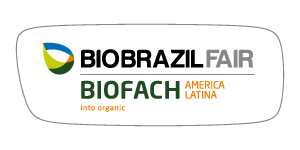
Our Biomes

Organic by nature!
Brazil is one of the planet’s most important World Environmental Heritage and it is home to incredible biodiversity. Almost 20% of all natural species inhabit one of its 6 biomes: Amazon, Cerrado, Caatinga, Pantanal, Atlantic Forest, and Pampa. A little of all this beauty and exuberance can be appreciated in the beautiful images we have prepared to record our fauna and flora. Enjoy!
Amazon
The greatest diversity on the planet

The Amazon biome is formed by different ecosystems: tropical forest, forests, and flooded planes, meadows, pasture areas, mountain refuges, and ancient formations. It has great potential for sustainable production in the most diverse economic sectors. In recent years, this immense environmental asset has been conquering consumers all over the world through the beneficial properties of fruits such as buriti, pupunha, tucumã, marimari, guarana, cupuaçu, açaí, Brazil nut, andiroba, and others. A fine example of the beneficial relationship between this biome and the industry is in the famous Chanel No. 5 perfume, which extracts part of its raw material from a local tree, the rosewood.
Amazon Numbers
419.694.300
hectares
2.500
tree species
30.000
plant species
1.100
confluent rivers
Cerrado
The expansion of the Brazilian agricultural frontier

Brazil’s second largest biome is fertile ground for agriculture and livestock production. The Cerrado vegetation, typical of the savannas, includes low shrubs in grassy areas, which extend through the plateaus and lowlands so typical of Brazil´s central areas. The region is home to many wild animal life species. The dry winter and rainy summer favored the emergence of plant species of great commercial potential, such as pequi, baru, mangaba, cagaita, buriti, jatobá, cajuí, arnica, mama-bitch, faveira, gueroba, murici, carnaúba, babaçu, palm trees, and many others.
Cerrado Numbers
203.644.800
hectares
1.200
fish species
837
bird species
199
mammals species
Caatinga
Brazilian one and only biome

Consisting of semi-arid lands, with low humidity and low rainfall, the Caatinga is rich in fruit, medicinal herbs, fibrous plants and strongly aromatic fruits cash crops. Here native bee species produce honey of the most appreciated and rich kind in all the world. Agricultural production in the Caatinga is concentrated in small family farms.
Caatinga Numbers
84.445.300
hectares
241
fish species
591
bird species
221
bee species
Atlantic Forest
Brazil focused on environmental preservation

The Atlantic Forest flanks the entire Brazilian coastline and spreads over Brazil´s most populated region. It features a wide variety of climates, soil, vegetation, and animal life. Its water reserves serve 70% of our country’s water demand. Here, environmental preservation actions and sustainability policies are very important and are yielding good results. An example is the mate that is grown in the southern region following the best sustainable practices.
Atlantic Forest Numbers
111.018.200
hectares
20.000
plant species
849
bird species
270
mammals species
Pantanal
A unique ecosystem

The floodplains created by the rising of the Paraguay River is a fantastic and unique ecosystem, with fauna and flora of great beauty. Many of its species can only be seen there, but others, which typical of the Amazon and Cerrado, also inhabit the Pantanal. In this World Natural Heritage Site listed by UNESCO, we can find products of medicinal value, different types of honey, and organic cattle raised by indigenous families, with the support of WWF Brazil. This is a perfect example of economic activity integrated with local culture and the environment.
Pantanal Numbers
15.035.500
hectares
263
fish species
463
bird species
86%
native vegetation cover
Pampa
A productive and diversified Brazil

The fields of the southern region create a highly favorable biome for cattle raising and production of a whole range of by-products. Organic grain production is also on the rise there. The destination of large waves of European immigrants, in the nineteenth and twentieth centuries, notably Italians and Germans, the region received their strong cultural influence and incorporated new production systems. A good example is the production of grape juice and sparkling wines, which are internationally recognized for their high quality.
Pampa Numbers
17.649.600
hectares
3.000
plant species
480
bird species
450
grass species



